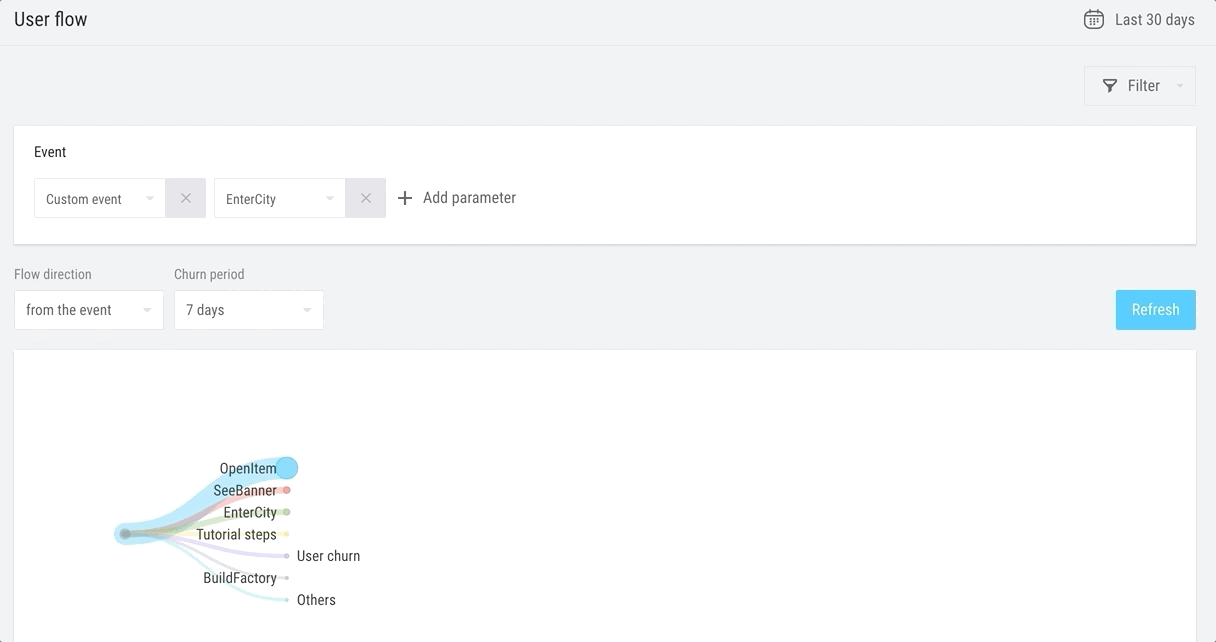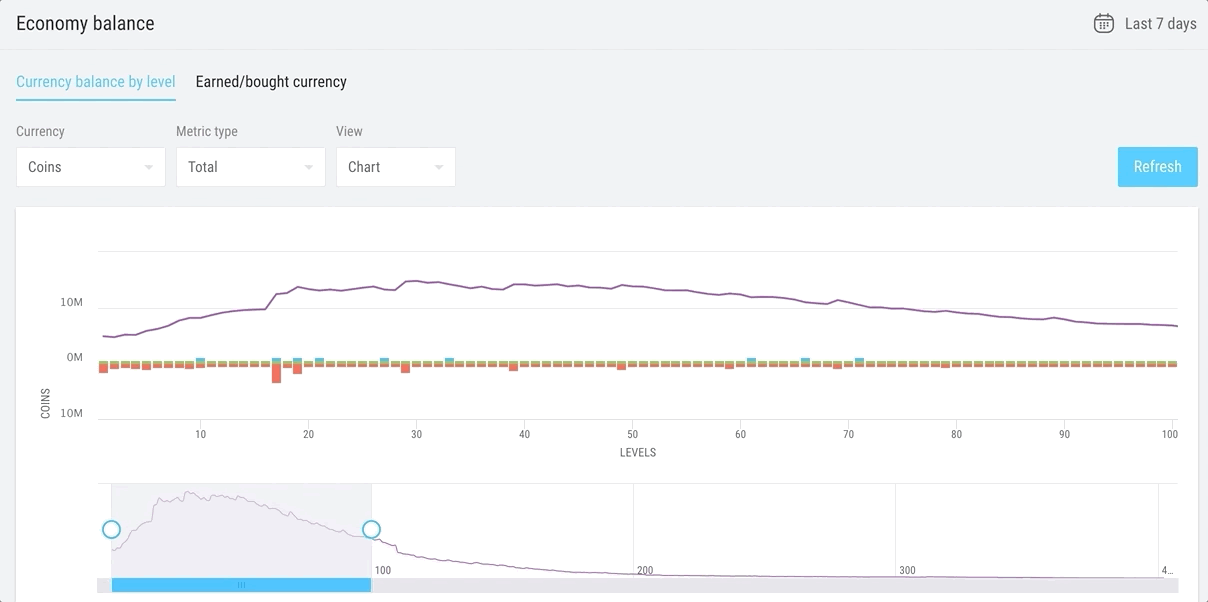Vasiliy Sabirov (devtodev): In 2020, the most important trend in mobile game analytics is predicting player behavior
We decided to start a series of interviews with people from the mobile games industry on our blog. Our first guest will be Vasiliy Sabirov from devtodev. What is the most important trend in 2020 in mobile games analytics according to Vasiliy? Which quality indicators should be constantly monitored by the analysts? What quality indicators should be measured during the game’s Soft Launch? You will find answers to all these questions in the following interview.
What is devtodev and what are you responsible for in the company?
Vasiliy Sabirov: At devtodev we provide a range of services to game developers to help them focus on what they like most – creating cool games. We take care of their analytics and player support. Our main product is the devtodev game analytics platform. It works in a very simple way: the developer downloads our SDK (or uses API), starts sending us data about player behavior inside the game, and we turn this data into insightful reports, that show both game problems and possibilities for improvement.Another important product of ours is analytical consulting. We take care of everything what usually game studios entrust to analysts: we analyze data, generate hypotheses, run tests, participate in discussions on game design, and so on. Our only b2c product is the Education Center. There we present all of our webinars, articles, books and educational courses – everything that is somehow related to game development and game analytics. Finally, one more product that we have is player support outsourcing. Our team solves a variety of game tickets (players requests) 24/7 in more than 10 languages. I am a Head of Analytics in the company. My team and I develop new reports, advise our clients and provide analytical consulting. We also write articles, conduct webinars, and represent devtodev on global game conferences.
How did your adventure with mobile apps and games start?
Vasiliy Sabirov: Nine years ago, I got a job at Xsolla, and that is how my journey in game dev began. Then I worked as a Lead Analyst at AlternativaGames (which is famous for Tanki Online game) where I learned all the subtleties of gaming economy. And for over 5 years now I have been working at devtodev and helping other games “succeed in life”.
Can a developer succeed in the mobile games market without an implemented data analytics tool?
Vasiliy Sabirov: Although it’s very unlikely, I wouldn’t completely exclude that option. I suppose that developers can successfully soft launch the game and go for a world release without any analytics (i.e. blindly). However, further managing a free-to-play project this way becomes nearly impossible.
What challenges do mobile game developers face in 2020 in terms of data analytics?
Vasiliy Sabirov: Mobile games world has switched from IAP-monetization to Ad Monetization, it is used more often and its revenues are higher. However, I would not say that the analytics there is as detailed as in the case of IAP-monetization. We even can’t always estimate how much money a particular player viewing a particular ad brings the company. I am sure that the world of gaming analytics will get there soon enough, but for now let us be patient.
Your top 5 quality indicators for games and mobile apps?
Vasiliy Sabirov:
1. The metric I would take to an uninhabited island is LTV. Metrics can be quantitative and qualitative. LTV is the most qualitative metric: the most important quality metrics are used for its calculation.
2. Cumulative N-days ARPU. It is average income from one active user over their first N days in the project. It is like LTV but junior. LTV is calculated over 60, 90, 180 days and Cumulative ARPU over shorter periods: 3, 7, 14 days. It is a very convenient metric for A/B – tests.
3. Long-term retention. According to the income structure of a f2p game, the players who have been in the project for a long time bring the main income. So, the higher is the retention of 30, 60, 90 days, the higher is the proportion of such players.
4. Short-term retention, for example, for 1 day. It is very a convenient and fast metric which you can use to optimize both tutorial and onboarding, as well as estimate the quality of traffic.
5. Sticky factor. It is calculated as DAU / MAU and shows stickiness (how players stick to the game and return to it). Usually, the game with a high sticky factor is an excellent base to build monetization on it.
Most medium and large mobile game developers enter the market using Soft-Launch. What indicators and how many indicators should a developer measure during a soft-launch, and what to focus on during a soft-launch?
Vasiliy Sabirov: At the soft launch stage, it is very important to make sure that a game is working effectively. It involves both technical (share of crashes) and analytics metrics. I usually recommend calculating all possible retention, conversion to payment and ARPPU (income from paying user), as well as cumulative ARPU for at least a week.
How long should a game be kept in Soft-Launch?
Vasiliy Sabirov: It depends on the goals you set for yourself. If it’s testing purely the technical aspect of the game, then you can make a soft launch it for one day for a thousand users. But if you want to make sure that the day 1 retention of your game is definitely more than 31% (not 30%, precisely 31%), then this will require many users as well as days. Analysts do not really like average values, but I would recommend at least two weeks on soft launch and at least 10-20 thousand users.
What short-term and long-term signals for acquisition campaigns should a developer measure during a Soft-Launch?
Vasiliy Sabirov: I’ll start with the long-term signals. By long-term I mean KPIs, which require at least 1 week to calculate. During this week, you can measure all retention metrics, conversion to payment (and even estimate conversion to repeat payment), cumulative ARPU for 7 days. Current machine learning algorithms can predict the payback of traffic quite accurately already after 3-5 days since the cohort appears. In terms of short-term metrics, it is day 1 retention, tutorial conversion, the average time taken to complete the tutorial, sessions per day. And don’t forget that you can always add in-game metrics specific to each game: the percentage of players who reached level N in M days; the percentage of players entering the store; the proportion of players who made a purchase at least for virtual currency.
What mobile game analytics trends do you see in 2020?
Vasiliy Sabirov: The most important trend is predicting player behavior. Not everybody and not always use forecasting and machine learning, but it is becoming more popular nowadays. And where there is forecasting, there is customization: if we know what will happen to players in the near future, we can influence them in the best way: if we see paying potential in the player, we can give them an offer. If we understand that the player will not bring us money, we can at least earn by showing them ads (it will be more profitable to disable ads for a potential payer). I see this as another trend, and I believe that after a few years games will be highly customized for each player, predicting their behavior in the early stages.
How do you see the mobile games market in 2020 in terms of monetization?
Vasiliy Sabirov: The mobile market is growing as well as its growth rate. I believe mobile games have a great future. So, now it’s really important to encourage people who don’t play games at all, pick up a smartphone and play a couple of games. It seems to me that hyper-casual games in this sense significantly lower the threshold for entering the world of games, and it is good.
Recently, changes were made in terms of devtodev’s functionalities. Can you tell us more about them?
Vasiliy Sabirov: I’ll tell you about the three top features and reveal one teaser for the future. We developed the User Flow report, it improved funnel functionality and behavioral analysis: you capture the start event and what users do after it. Moreover, you can capture the final event, and see how users come to a particular state.
Advanced gaming analytics reports. We went deeper into in-game analytics and now we can analyze the consumer basket at different levels, track the dynamics of currencies within the game, work to improve the level difficulty curve and its monetization.
Forecasting. Isn’t it convenient when the system not only shows you the current situation but also can predict the future? You can compare the facts with the forecast and find deviations from the predicted behavior.
As for the teaser, we decided to become a LiveOps management platform. We are already doing great with analytics, now it’s important to move on to the next step – influencing the player. At the moment, we are developing a system that will allow us to influence various arbitrarily flexible segments of players and measure the effectiveness of these influences. For example, if you want to give a discount to paying players who can leave the game, you can divide them into segments by the day of inactivity and, depending on this (as well as their previous payment behavior), vary the size of the discount.
The 3 mobile games you played in 2019 are?
Vasiliy Sabirov: I played a lot of card games. For example, I enjoyed the analogue of Hearthstone’s Autochess – it gives a completely different, real time, approach to map synergy. I also liked the mobile Gwent, it is made quite well and thoughtful. As a fan of indie games, I really enjoyed the Apple Arcade service. And especially the game “What the golf?”, which blows your mind with each new level and goes ‘outside the box’.
GWENT in Pre-Registration: analysis of mobile user acquisition activities
We decided to start a series of interviews with people from the mobile games industry...




